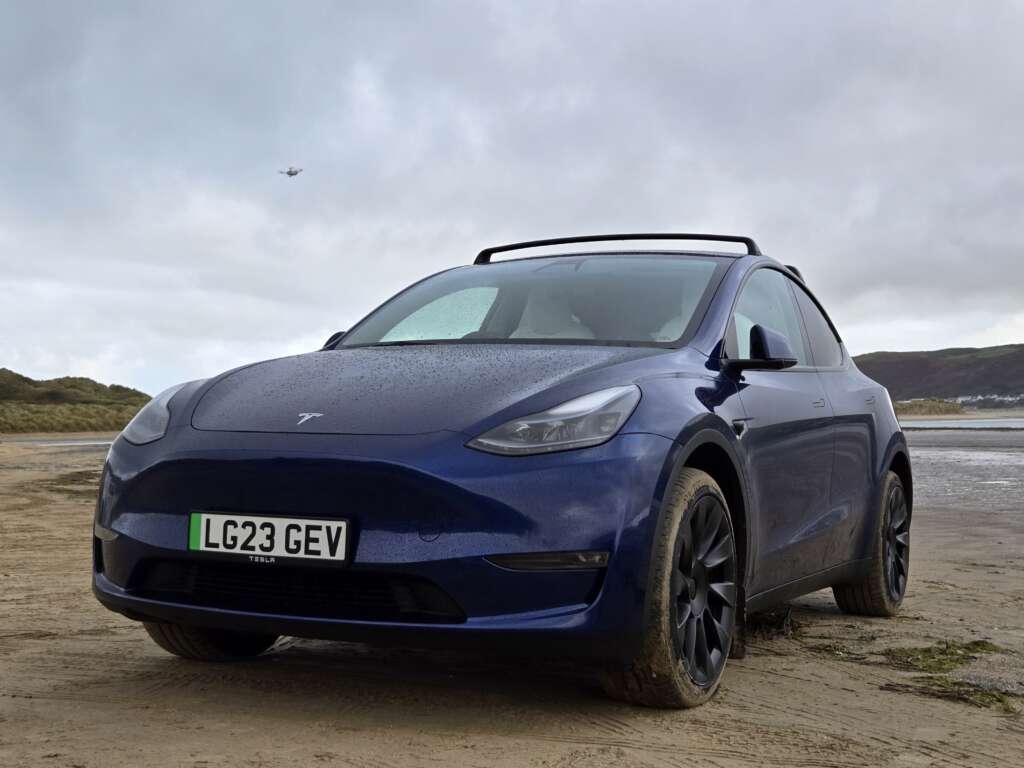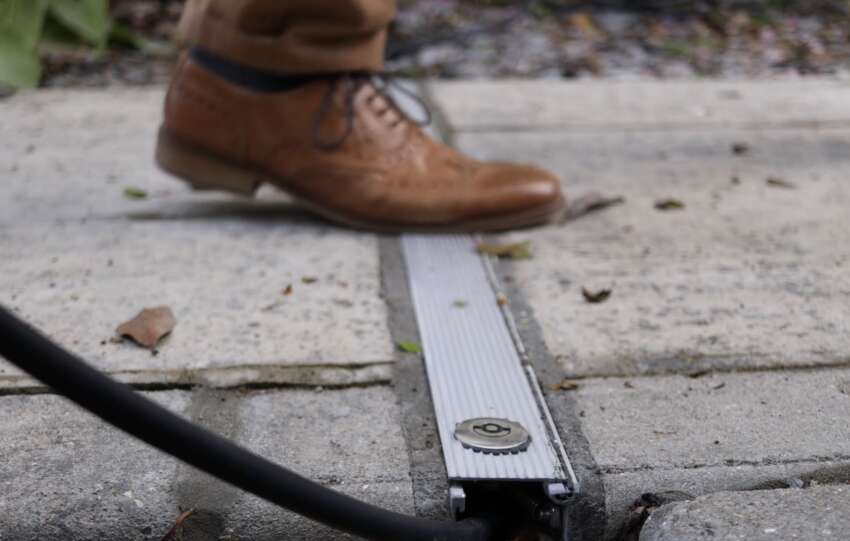Share This Article
Let me start with a confession: I’ve always smirked at the idea of electric vehicles (EVs) navigating the countryside. It wasn’t the charging infrastructure that bothered me – it was the weight, the lack of engine noise, and the disconnect I assumed would exist on twisty, unpredictable roads. As a die-hard petrolhead with a Mini Clubman JCW (306bhp, All4), I’ve always reached for its keys when heading into the wilds of Mid or West Wales. My Tesla Model 3 Performance (M3P, 2019), for all its tech brilliance, stays put in those moments.
Why? To me, the thrill of country driving is all about feeling connected to the road. With the EV’s extra weight, I imagined it would lack agility. And while the M3P’s predicted 300-mile range (on paper) is excellent, I still find myself hesitating at the thought of relying on chargers in rural areas. Plus, I love the visceral thrill of a petrol engine’s roar and the physicality of changing gears through winding B-roads.

But when I recently had the chance to test a Tesla Model Y Long Range (2023) for a week, I decided it was time to challenge my assumptions. Could an EV really handle the countryside? There was only one way to find out.
Destination: Aberystwyth
The plan was simple: a weekend trip to Aberystwyth with my family. At 116 miles from Cardiff, it was far enough to test the car’s range and handling but close enough to feel manageable. Aberystwyth holds a special place in my heart – I spent my university years there – and the fact it now has a Tesla Supercharger, installed in 2022, sealed the deal.

Packing for the trip was surprisingly easy, thanks to the Model Y’s enormous storage capacity. We packed:
- Two small suitcases,
- Three rucksacks,
- Two large bags of food,
- Multiple coats,
- My DJI drone case, and
- A variety of other items that seemed essential at the time.

Even with all of that, we only filled the top shelf of the boot. The frunk (front trunk), which boasts an impressive amount of additional space, wasn’t even needed. On paper, the Model Y offers up to 2,158 litres of space, dwarfing the Mini Clubman’s compact luggage area. For a family trip, this was a clear win for the Tesla.
The Journey: A Real-World Test
The drive to Aberystwyth was far from straightforward. An accident on the M4 added 20 minutes to our journey, followed by a road closure near Cross Hands that diverted us through Llandeilo during its Festival of Senses parade. This meant standstill traffic and lots of stop-start driving. Despite these delays, the Model Y made it to Aberystwyth with 50% charge remaining.

Here’s how it performed:
Handling: Better Than Expected
At over 2,000kg, the Model Y is undeniably heavy, and you feel it. But its low centre of gravity (thanks to the battery placement) means it handles far better than its weight suggests. On the B4302, a winding road full of hairpins, mild switchbacks, and elevation changes, the Model Y surprised me. It gripped the road confidently, giving me the assurance to push it through corners. While it doesn’t offer the sharpness or immediacy of my Mini JCW, it’s far from dull.
Weight vs. Agility
The constant changes in speed on rural roads resulted in a 7% greater battery drop than expected, but that’s to be expected with frequent braking and acceleration. While the Model Y lacks the playfulness of a hot hatch, it offers a more composed, stable ride – ideal for family journeys where comfort takes priority.
Lights, Height, and Presence: A New Perspective

Adaptive Headlights: Game-Changer
Driving on unlit country lanes at night can be nerve-wracking, but the Model Y’s adaptive headlights made it a breeze. These headlights automatically adjust to curves, dim for oncoming traffic, and illuminate a wider area when needed. Not once did I get flashed by another driver, and I noticed they reacted faster than other vehicles on the road. For anyone considering rural EV driving, this is a feature worth having.

Height Advantage
The Model Y sits higher than the Model 3 (1,624mm vs. 1,441mm), which significantly improves visibility. The extra height allowed me to better judge the width of narrow lanes, making the car feel more manageable despite its bulk. On one occasion, when a lorry edged over the white line, the car’s elevated seating position helped me navigate confidently.
Parking: A Learning Curve
Parking in the Tesla Model Y was a mixed experience, primarily due to its size and Tesla’s newer Vision-based system. Unlike older models equipped with ultrasonic sensors, the Model Y relies solely on cameras for parking assistance. While the system is impressive in many ways, it took some getting used to.

Tesla Vision: Accurate but Over-Cautious
The Vision-based parking sensors were generally accurate but leaned on the side of caution. On several occasions, the car flagged obstacles that weren’t actually that close, causing unnecessary alerts. While this is better than underestimating distances, it did make me second-guess the system at times. For particularly tight spaces, I asked my partner to guide me, just to be safe.
Rear Parking: Confidence Booster
The rear camera and parking guidelines were spot-on, making reversing into spaces straightforward. I felt confident using the system, even in smaller bays. However, when it came to the front of the car, things were less clear. The sloped bonnet made it harder to judge exactly where the car ended, especially in tight spots, which led me to err on the side of caution.
Width and Height: Perception vs. Reality
At 1,921mm wide (excluding mirrors), the Model Y isn’t much larger than other SUVs, but its height and chunkier design can make it feel bigger. This was particularly noticeable in narrow rural car parks, where spaces often felt designed for much smaller vehicles. While I didn’t experience any scrapes or bumps, I was more conscious of the car’s dimensions than I am with either my Mini Clubman or Model 3.
Range Anxiety: Real or Imagined?
The Model Y’s newer battery technology and increased range (compared to my M3P) proved reassuring. While the range prediction fluctuated slightly during the unexpected diversions, it adjusted dynamically, ensuring we had plenty of charge to reach our destination. Around town and on normal roads, its range predictions were spot-on.

Would I trust it for a longer, more remote trip? Yes, but I’d still plan my stops carefully. With EV charging infrastructure improving across the UK, range anxiety is becoming less of an issue – though I imagine winter conditions might test this further.
Performance: A Different Kind of Speed

While the AWD Model Y isn’t as blisteringly fast as my Model 3 Performance (4.8 seconds to 60mph vs. 2.9 seconds), it’s quick enough for most situations. Overtaking on country roads felt effortless, and while the initial throttle response was slightly hesitant (likely down to me adjusting to the car), it didn’t take long to adapt. For a family SUV, its performance is more than adequate – and arguably more practical than the M3P’s rocket-like acceleration.
Am I Converted?
So, have I swapped my allegiance from petrol to electric for country driving? Not entirely, but I’m closer than I expected.
For solo drives, where I crave the connection and thrill of a roaring engine, the Mini JCW will always win. There’s something about the rawness of a petrol engine, the manual inputs, and the sound that makes every twist and turn more exciting.

However, for family trips or longer drives, the Tesla Model Y Long Range has proven itself a strong contender. Its comfort, storage, range, and tech (those adaptive headlights!) make it a joy to drive in its own right. While I’d still argue that EVs don’t quite match the theatre of a petrol car, they offer a new kind of experience – one that’s refined, practical, and increasingly difficult to ignore.
Would I sacrifice the M3P’s speed for the Model Y’s range and practicality? After this trip, I might just consider it. If EVs are the future, then perhaps the countryside won’t be left behind after all.

